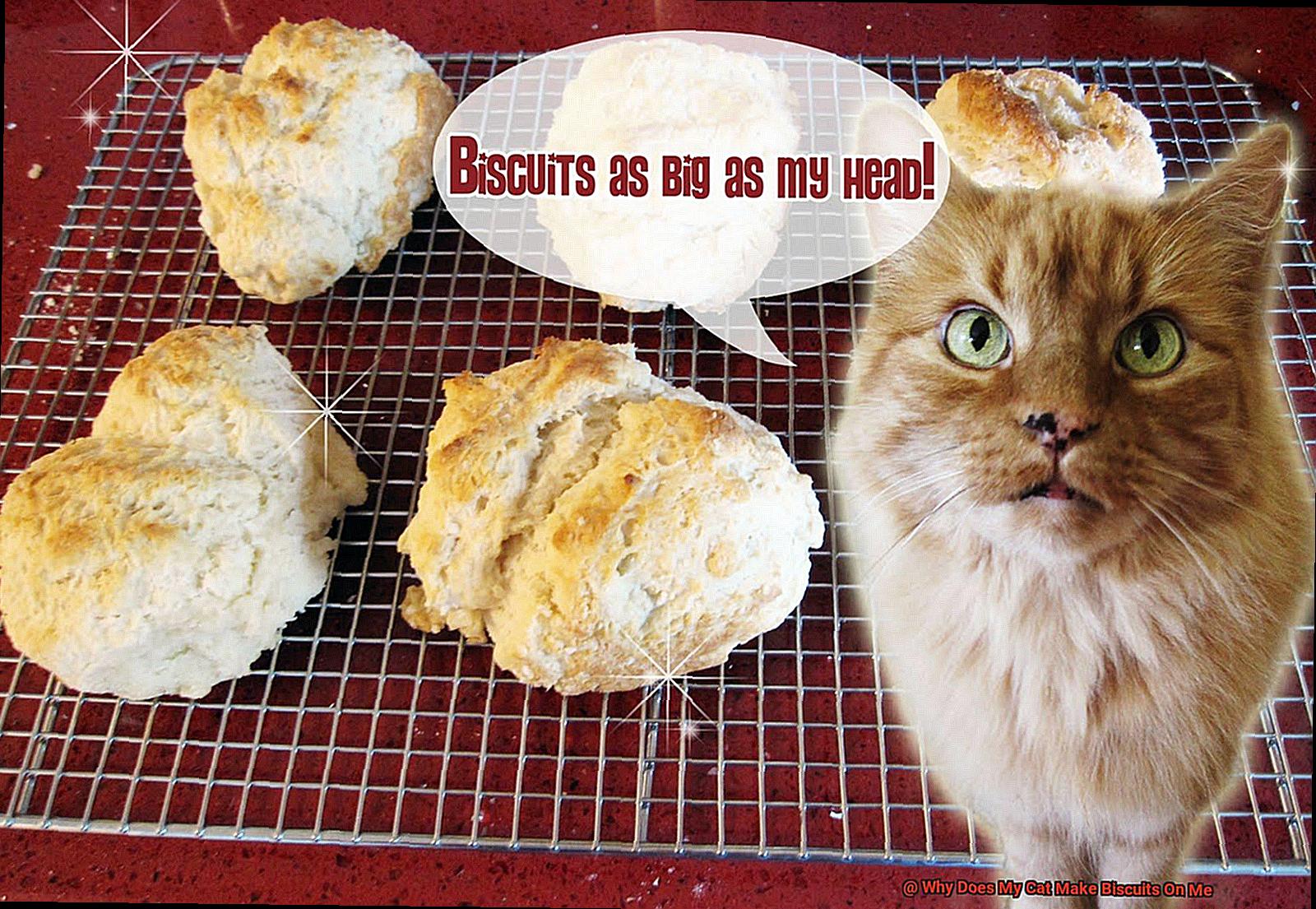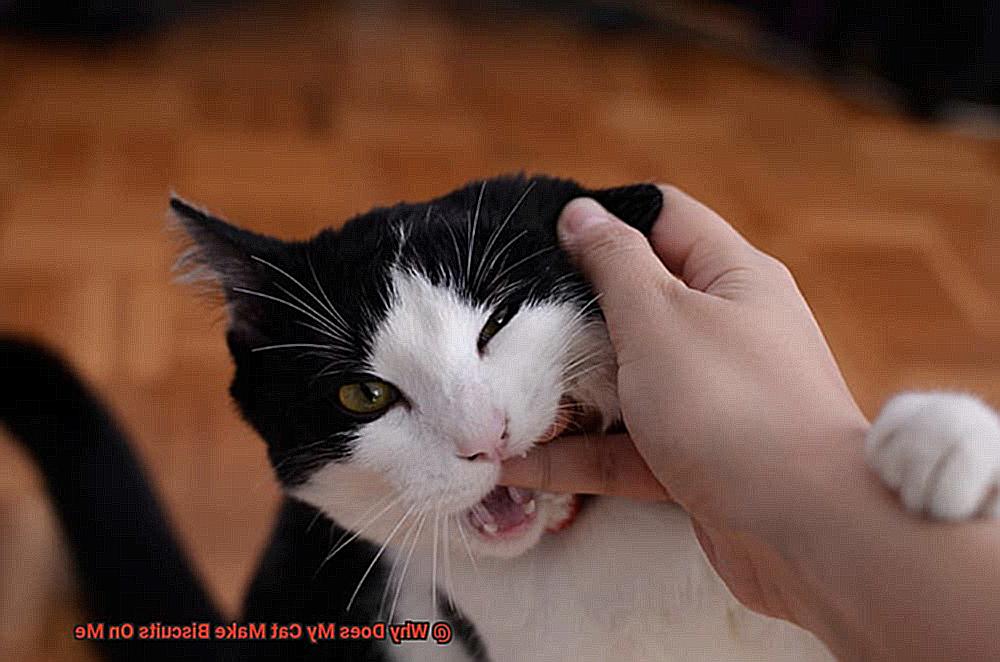As cat owners, we’re all familiar with the quirky habits and behaviors of our feline friends.
One such behavior that may leave you scratching your head is when your cat starts “making biscuits” on you. This refers to the rhythmic movement of pushing their paws in and out, often on soft surfaces like blankets or even your lap.
Despite how strange it may seem, kneading is actually a normal and natural behavior for cats of all kinds, whether they’re indoor pets or wild animals. There are many reasons why cats knead, and understanding them can help us better connect with our furry companions.
In this article, we’ll take a closer look at why cats knead, including the various ways they express affection through this behavior and the benefits it can bring to both cats and humans alike. We’ll delve into everything from bonding to genetic instincts that have been passed down through generations.
Whether you’re a new cat owner or have been living with felines for years, join us as we explore the fascinating world of cat behavior and answer the age-old question: “Why Does My Cat Make Biscuits on Me?”
What is Kneading?
Let me take you on a journey into the world of cats and their kneading habits.
Kneading is a rhythmic movement where cats push and pull their paws on a smooth surface, similar to how a baker kneads dough before baking it. It’s also known as “making biscuits” or “making bread,” and it’s a common sight among our feline friends.

One of the reasons why cats are kneading is that it’s a trace of their kitten behavior. Kittens knead their mother’s belly to increase milk production when breastfeeding, so cats can continue to knead on soft surfaces as adults, providing them with a sense of comfort and security.
Another reason why cats knead is that they’re marking their territory. Cats have scent glands in their paws, so they knead on an object or human, leaving their scent behind.
This behavior can be seen as a way for cats to identify their owners as their own and create a sense of ownership. Cats may also knead as a sign of affection.
When a cat kneads on its owner, it can purr or nuzzle against them, signaling that it’s happy and content. This behavior can be interpreted as a way for cats to bond with their owners and show them that they love and respect them.
However, some cats may knead excessively, which can be bothersome or even painful for their owners. In such cases, providing your cat with alternative items to knead on, such as scratching posts or blankets, can help redirect their behavior.
By knowing that it’s a natural habit and a sign of love and affection, you can appreciate your feline companion even more.
How to Respond to Kneading Behavior
This is when they push and pull their paws against a soft surface, often accompanied by purring. It’s a fascinating behavior that can provide insight into your cat’s emotional state. However, sometimes it can be painful or disruptive to their owner’s routine. So, how should you respond to this behavior?
Provide a comfortable surface
Cats usually knead on soft surfaces like blankets or pillows. If your cat is kneading you and it becomes painful, try providing a soft surface for them to knead on instead. This will not only prevent discomfort for you but also satisfy their instinctual behavior.
Redirect the behavior

If your cat is kneading too much or at an inconvenient time, try redirecting the behavior by offering a toy or treat instead. This will help them learn that there are other appropriate times and places for kneading.

Set boundaries
It’s important to establish boundaries with your cat and let them know when their kneading is becoming too much. Gently push them away or redirect their behavior when necessary. This will help them understand what is acceptable and what is not.
Enjoy the bonding
Kneading behavior can be a sign of affection and bonding between you and your cat. So, if it’s not disruptive or painful, enjoy the moment and revel in the love your furry friend is showing you. This bonding experience can strengthen your relationship with your cat.
So, responding to kneading behavior requires patience and understanding. By providing a comfortable surface, redirecting the behavior, setting boundaries, and enjoying the bonding experience, you can create a positive relationship with your cat while still maintaining your own comfort and routine.
_I5isbvZsCU” >
Understanding Your Cat’s Needs
This behavior may seem puzzling, but there are several reasons behind it.
Firstly, making biscuits is an expression of love and comfort. When kittens nurse, they knead their mother’s belly to stimulate milk flow. Hence, making biscuits may be a leftover behavior from kittenhood that indicates a sense of safety and contentment. Your cat is telling you, “I love you, and you make me feel secure and happy.”
Secondly, making biscuits can also be a way for cats to mark their territory using the scent glands in their paws. By kneading you, your cat is leaving their scent on you and claiming you as their own. This behavior is more common in unneutered male cats who are more territorial. So if your male cat is making biscuits for you, it’s his way of saying, “You belong to me.”
Lastly, some cats make biscuits as a form of self-soothing or stress relief. The repetitive motion can be soothing and comforting for cats, especially if they’re feeling anxious or stressed.
If your cat is experiencing a rough time or feeling overwhelmed, making biscuits for them can help alleviate their stress. Understanding why your cat makes biscuits on you can help foster a stronger bond between you and your feline friend.
Also Read: Why Do Cats Knead My Stomach?
Conclusion
In conclusion, your cat’s kneading behavior is rooted in their natural instincts and can be attributed to a variety of reasons.
Whether it’s marking their territory, expressing love and protection, or self-soothing, understanding why your feline friend makes biscuits on you is key to creating a happy household. As cat owners, it’s important to cater to our pets’ needs and behaviors.
Providing soft surfaces for kneading, redirecting the use of toys or treats when appropriate, setting boundaries, and enjoying the bonding process all help us improve our cats’ relationships while maintaining our own comfort and routine. Cats are endlessly fascinating creatures with unique personalities that continue to surprise us.
By exploring the world of cat behavior and understanding why they do what they do, we can better care for our furry companions and give them the love they deserve.







